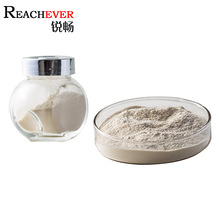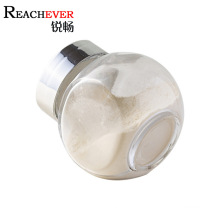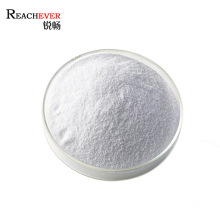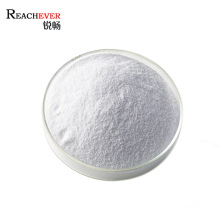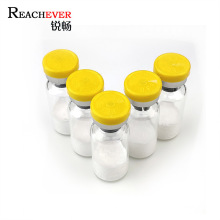Home > Industry Information > Application Research of DPD Spectrophotometry for Chlorine Dioxide Detection
Application Research of DPD Spectrophotometry for Chlorine Dioxide Detection
2021-04-25
Application Research of DPD Spectrophotometry for Chlorine Dioxide Detection Shenzhen Guanlan Water Supply Co., Ltd. Huang Xiaoping, Zhong Xiaoyan 1 Introduction As a strong oxidant and a broad-spectrum disinfectant, chlorine dioxide has been widely used in China's small and medium-sized waterworks due to its many advantages. 2 Introduction to DPD Colorimetry DPD spectrophotometry is a standard method for detecting free residual chlorine and total residual chlorine in China's national standard "Water Quality Vocabulary and Analysis Method" GB11898-89. It is jointly organized by the American Public Health Association, the American Waterworks Association and the Water Pollution Control Association. In the "Standards for Water and Wastewater Tests", the DPD method has been developed since the fifteenth edition and is recommended as the standard method for testing chlorine dioxide. The advantage of the DPD method is that it can separate chlorine dioxide from other forms of chlorine (including free residual chlorine, total residual chlorine, and chlorite), making it easier to perform colorimetric tests. This method is not as accurate as current titration, but the results obtained can be used for most general purposes. 3 Principle Under the condition of pH 6.2~6.5, ClO2 first reacts with DPD to form red compound in the first step, but the amount reaches only the total available chlorine content (equivalent to the reduction of ClO2 to chlorite ion). one. If the water sample is acidified in the presence of iodide, the chlorite and chlorate also react. When neutralized with the addition of bicarbonate, the resulting color corresponds to the total available chlorine content of ClO2. . The interference of free chlorine can inhibit free chlorine by adding glycine. According to glycine, free chlorine can be immediately converted into chloroaminoacetic acid, but it does not affect ClO2. 4 instruments 4.1 Japan AND HM200 type one ten thousandth electronic balance 4.2 US HACH DR/2010 Spectrophotometer 5 reagents (all reagents are of analytical grade) 5.1 Potassium iodate standard stock solution, 1.006g/L: Weigh 1.003g potassium iodate (KIO3, dried at 120~140°C for 2h), dissolve in high purity water, dilute into 1000ml volumetric flask and dilute to the mark and mix. 5.2 Potassium iodate standard use solution, 10.06mg / L: Take 10.0ml stock solution (4.1) in a 1000ml volumetric flask, add about 1g potassium iodide (4.5), dilute with water to the mark, and mix. Formulated on the day of use, packed in brown bottles. 1.00 ml of this standard use solution contains 10.06 μg KIO3, which is equivalent to 1.00 mg/L of available chlorine. 5.3 Phosphate buffer: Dissolve 24 g of anhydrous sodium hydrogen phosphate and 46 g of anhydrous potassium dihydrogen phosphate in distilled water, and mix 100 ml of distilled water in which 800 mg of EDTA disodium salt is dissolved. Dilute to 1 L with distilled water, optionally add 20 mg of mercuric chloride or 2 drops of toluene to prevent mold growth. The addition of 20 mg of mercuric chloride eliminates the interference of trace amounts of iodide that may remain when free chlorine is measured. (Note: Mercury chloride is toxic, be careful to avoid ingestion) 5.4 N,N-Diethyl-p-phenylenediamine (DPD) indicator: dissolve 1.5g of DPD sulfate pentahydrate or 1.1g of anhydrous DPD sulfate in chlorine-free containing 8ml of 1+3 sulfuric acid and 200mg of EDTA disodium salt Dilute to 1 liter in distilled water, store in a brown ground glass bottle, and store in a dark place. After the indicator fades, it needs to be reconstituted. Regularly check the absorbance of blank samples, If the absorbance of the blank at 515 nm exceeds 0.002/cm, the reconstitution is discarded. 5.5 Potassium iodide (KI crystal) 5.6 Sodium arsenite solution: Dissolve 5.0 g of NaAsO2 in distilled water and dilute to 1 liter. Note: NaAsO2 is toxic and avoids ingestion! 5.7 Thioacetamide solution: Dissolve 125 mg of thioacetamide in 100 ml of distilled water. 5.8 Glycine solution: Dissolve 20 g of glycine in chlorine-free water and dilute to 100 ml. Store frozen. Re-matching occurs when turbidity occurs. 5.9 Sulfuric acid solution (about 1 mol/L): 5.4 ml Concentrated H2SO4 was dissolved in 100 ml of distilled water. 5.10 Sodium hydroxide solution (about 2 mol/L): Weigh 8 g of NaOH and dissolve it in 100 ml of pure water. 6 Calibration (Working) Curve Add 0.0, 0.25, 0.50, 1.50, 2.50, 3.75, 5.00, 10.00 ml of potassium iodate standard solution to a series of 50 colorimetric tubes, and add about 1g of potassium iodide and 0.5ml of sulfuric acid solution. Mix and stand for 2 min, then add 0.5 ml of sodium hydroxide solution and dilute to the mark. The concentrations in each vial correspond to 0.00, 0.05, 0.10, 0.30, 0.50, 0.75, 1.00, 2.00 mg/L of available chlorine, respectively. Add 2.5 ml of phosphate buffer and 2.5 ml of DPD indicator solution, mix, and immediately (within 2 min) at 515 nm, absorb the absorbance with a 1 inch cuvette. Draw a standard curve and find the regression equation. 7 Determination steps 7.1 Chlorine Dioxide: Add 1 ml of glycine solution to 50 ml of water, add 2.5 ml of phosphate buffer and 2.5 ml of DPD indicator, mix, and measure absorbance (with G) within 2 minutes immediately. 7.2 Chlorine dioxide and free available chlorine: Take another 50 ml of water, add 2.5 ml of phosphate buffer and 2.5 ml of DPD indicator, mix and measure the absorbance (with a reading of A) immediately (within 2 min). 7.3 Chlorine Dioxide, Free Available Chlorine and Compound Available Chlorine: Take another 50ml water sample, add about 1g potassium iodide, add 2.5ml phosphate buffer and 2.5ml DPD indicator solution, mix and measure the absorbance immediately (within 2min) (The reading is C). 7.4 Total available chlorine including free chlorine dioxide, chlorite, free residual chlorine and combined residual chlorine: After taking reading C, add 0.5 ml of sulfuric acid solution to the same cuvette water sample and mix. After standing still for 2 min1, 0.5 ml of sodium hydroxide solution was added, and the absorbance was measured immediately after mixing (reading D). 8 Calculation of results ClO2 = 1.9G (calculated as ClO2) Free effective chlorine = AG Compound effective chlorine = CA Total available chlorine = D Chlorite = D-(C+4G) 9 Research and discussion 9.1 Interference and elimination 9.1.1 Effects of manganese: The most important interfering substance encountered in drinking water is manganese oxide. After adding phosphate buffer (4.3), 0.5~1.0ml sodium arsenite solution (4.6) can be added, and then DPD indicator is added to measure the absorbance. This reading is subtracted from reading A to eliminate the interference of manganese oxide. 9.1.2 Effect of temperature: In all current analytical methods that can distinguish between ClO2, free chlorine and chemical chlorine, including current titration, continuous iodometry, etc., temperature will affect the accuracy of differentiation. When the temperature is high, the chemical chlorine (chloramine) is promoted to participate in the reaction in advance, resulting in a high result of ClO2, especially free chlorine. The first method of control is to control the temperature, preferably at about 20 °C. Alternatively, after adding DPD to the water sample and mixing, immediately add 0.5 ml of thioacetamide solution (4.7) to stop the residual chlorine (chloramine). The reaction to DPD. 9.1.3 Effect of colorimetric time: On the one hand, the red color produced by ClO2 and the DPD indicator is unstable, the darker the color, the faster the fading, and on the other hand, the phosphate buffer solution is mixed with the DPD indicator and the time is prolonged. It also produces false red in itself, and experience has shown that this time-dependent color rendering instability is the main cause of the decline in data precision. Therefore, the speed of each operation step is accelerated, and the standardization of controlling the time used in each step is essential for improving the precision. According to experience: the color development below 0.5mg/L can be stabilized for about 10~20min, the color development at 2.0mg/L can only be stabilized for about 3~5min, and the color stability time above 5.0mg/L will be less than 1min. 9.1.4 Interference from other oxidants. 10 The linearity of the working curve is based on potassium iodate as the reference material. The standard curve is very linear. The correlation coefficient of one standard curve and two working curves we produced is above 0.999. Press (5) to make the working curve as follows: figure 1 11 Repeatability We take 3~5 parallel samples from the water from the pit water plant to measure free ClO2 and total available chlorine. The results (see Table 1.1~1.5) indicate that whether it is measuring free ClO2 or measuring total available chlorine, precision The degree is mainly related to the content of the sample to be tested. The concentration of the analyte is relatively high in the vicinity of the detection limit, which is 12.5%. When the content of the analyte is above 1.0 mg/L, the normal concentration of “residual chlorine” is The relative standard deviation is very low, with a minimum of 0.57%. In addition, in the national standard GB11898-89, eight laboratories organized by Anhui Environmental Testing Center Station have verified the indoor precision data of the determination of free chlorine by this method: the concentration of free chlorine in drinking water is in the range of 0.36~.070mg/L. The relative standard deviation within is 1.1%. Table 1.1 Table 1.2 Table 1.3 Table 1.4 Table 1.5 12 The standard addition recovery experiment uses the factory water of the squatting water plant as the background sample, adding different concentrations of the standard (potassium iodate). Since the standard is not ClO2, the recovery experiment only examines the determination of total available chlorine. It can be seen from the experimental data (see Table 2.1) that the method often exhibits a high recovery rate when the scalar quantity is added at a low concentration (near the lower detection limit), and the recovery rates of other scalar amounts are basically satisfactory. Table 2.1 Standardized recovery experiment 13 Detection limit and lower limit of measurement 13.1 Detection limits International Union of Pure and Applied Chemistry (IUPAC) regulations for detection limits: detection limit L = k`Sb / k where S b - blank standard deviation of the signal; k ` —— The coefficient k determined according to a certain level of confidence - the sensitivity of the method (ie the slope of the calibration curve) is taken as k`=3 according to IUPAC 1975 recommendations, ie a confidence level of approximately 90%. The detection limit of the method was calculated to be L=0.018 mg/L by the 14 blank value data accumulated by us (Fig. 2). 13.2 The lower limit of determination refers to the recommendation of the Environmental Water Quality Testing Quality Assurance Manual (Second Edition) published by Chemical Industry Press. The lower limit of LD=3.3L is LD=0.059mg/L. figure 2 13.3 Optimum measurement range According to the detection limit and the lower limit of measurement and our experience, the applicable range of this method is 0.02~3.0mg/L; the optimal measurement range is about 0.06~2.5mg/L. 14 Conclusions and evaluation 14.1 Advantages of this Law 14.2 It is relatively simple to distinguish between ClO2 and other forms of chlorine, which helps to understand the status of various residues after ClO2 disinfection. 14.3 Due to the use of potassium iodate as a standard solution, the standard curve is simple to make, avoiding the need for frequent calibration with unstable ClO2 or chlorine. 15 Insufficient law 15.1 The accuracy of each component in the low concentration range is poor. 15.2 The method can theoretically be extended to detect ClO3- ions, but further research is needed. |
Here you can find the related products in Application Research of DPD Spectrophotometry for Chlorine Dioxide Detection, we are professional manufacturer of Monomers Oligomers,Cas 108-45-2,M-Phenylenediamin In Stock,108-45-2 99%. We focused on international export product development, production and sales. We have improved quality control processes of Application Research of DPD Spectrophotometry for Chlorine Dioxide Detection to ensure each export qualified product.
If you want to know more about the products in Application Research of DPD Spectrophotometry for Chlorine Dioxide Detection, please click the product details to view parameters, models, pictures, prices and other information about Monomers Oligomers,Cas 108-45-2,M-Phenylenediamin In Stock,108-45-2 99%.
Whatever you are a group or individual, we will do our best to provide you with accurate and comprehensive message about Application Research of DPD Spectrophotometry for Chlorine Dioxide Detection!
If you want to know more about the products in Application Research of DPD Spectrophotometry for Chlorine Dioxide Detection, please click the product details to view parameters, models, pictures, prices and other information about Monomers Oligomers,Cas 108-45-2,M-Phenylenediamin In Stock,108-45-2 99%.
Whatever you are a group or individual, we will do our best to provide you with accurate and comprehensive message about Application Research of DPD Spectrophotometry for Chlorine Dioxide Detection!
Monomers Oligomers, Cas 108-45-2, M-Phenylenediamin In Stock, 108-45-2 99%
Centrifugal Pump Co., Ltd.Reverse Osmosis System http://www.hnionicliquids.com
